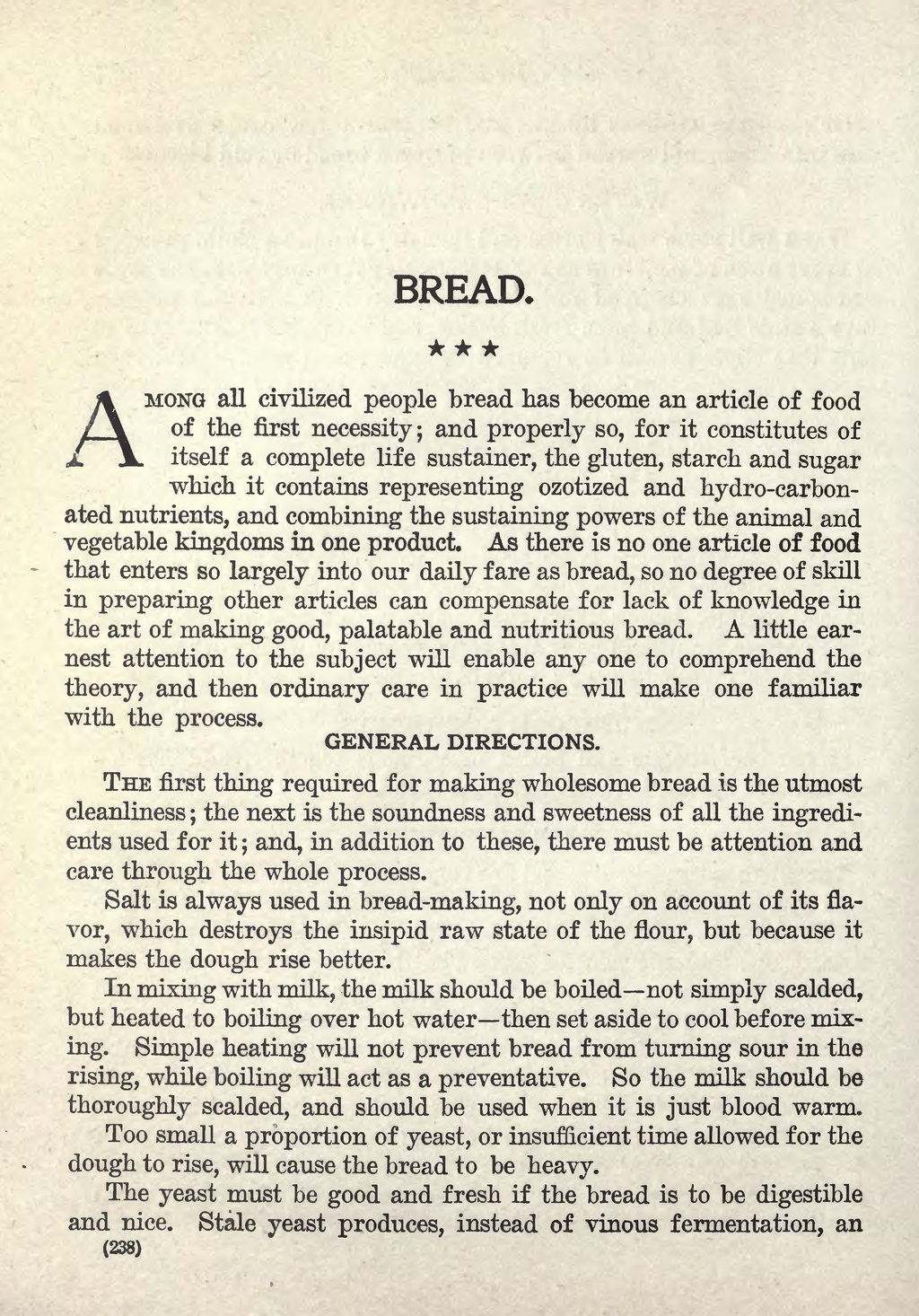BREAD.
Among all civilized people bread has become an article of food of the first necessity; and properly so, for it constitutes of itself a complete life sustainer, the gluten, starch and sugar which it contains representing ozotized and hydro-carbonated nutrients, and combining the sustaining powers of the animal and vegetable kingdoms in one product. As there is no one article of food that enters so largely into our daily fare as bread, so no degree of skill in preparing other articles can compensate for lack of knowledge in the art of making good, palatable and nutritious bread. A little earnest attention to the subject will enable any one to comprehend the theory, and then ordinary care in practice will make one familiar with the process.
GENERAL DIRECTIONS.
THE first thing required for making wholesome bread is the utmost cleanliness; the next is the soundness and sweetness of all the ingredients used for it; and, in addition to these, there must be attention and care through the whole process.
Salt is always used in bread-making, not only on account of its flavor, which destroys the insipid raw state of the flour, but because it makes the dough rise better.
In mixing with milk, the milk should be boiled not simply scalded, but heated to boiling over hot water then set aside to cool before mixing. Simple heating will not prevent bread from turning sour in the rising, while boiling will act as a preventative. So the milk should be thoroughly scalded, and should be used when it is just blood warm.
Too small a proportion of yeast, or insufficient time allowed for the dough to rise, will cause the bread to be heavy.
The yeast must be good and fresh if the bread is to be digestible and nice. Stale yeast produces, instead of vinous fermentation, an
